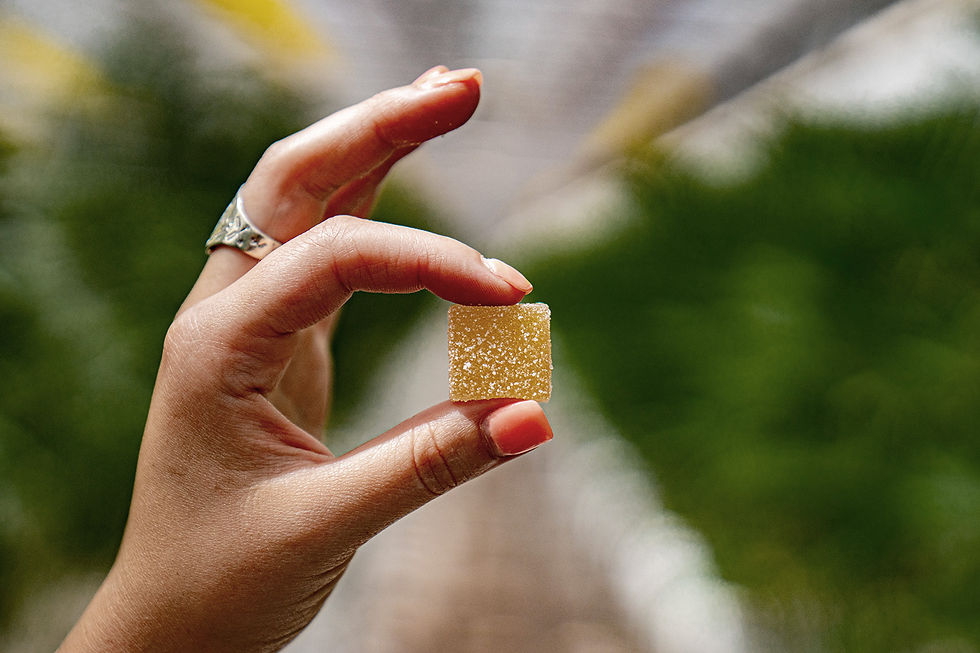Welcome to Your Endocannabinoid System: The heart of balance.
- Asha Apothecary
- Jan 29, 2020
- 4 min read

The Endocannabinoid System (ECS) is one of the most important systems for organism homeostasis (or balance) and affects virtually every physiological process in the body including appetite, pain, mood, immune function, and others. Below is a breakdown of ECS basics and its critical function.
What exactly is the Endocannabinoid System?
The ECS can be found throughout the brain, nervous system, and organs of all mammals including humans. It is the body’s internal system of cannabinoid (kuh·na·buh·noydz) receptors that can bind both human-made (endocannabinoids) and plant-made (phytocannabinoids) cannabinoids (The prefix endo- means “from within” while phyto- means “plant”.) Cannabinoids are a group of naturally occurring compounds that can be found in hemp, other plants, and even the human body. For example, hemp CBD is a type of phytocannabinoid that can bind to our ECS.
How did we discover it?
Interestingly, the human endocannabinoid system was only discovered due to initial research by Dr. Raphael Mechoulam into the effects of cannabis-derived phytocannabinoids on the human body in the 1990s. Had scientists not investigated the potential role of phytocannabinoids in humans, we might not know of this signaling system today. Unfortunately, It is not yet taught in most medical schools worldwide.
Why is the ECS important to our health and wellbeing?
The ECS is crucial in regulating homeostasis for the immune and central nervous system and can be altered through different ailments like neurological diseases. It is the largest biological system of receptors in the body with some scientists suggesting it to be the most important system involved in human health through the maintenance of a healthy immune system.*
Why do we want homeostasis?
Our ECS works to maintain a stable and balanced internal environment in the face of external environmental stressors, such as temperature, stress, inflammation or harmful chemical exposures.* By constantly working to maintain homeostasis, the ECS ensures that body and mind work in harmony for optimal wellness.*
What is the ECS made up of?
Endocannabinoids: bind and activate cannabinoid receptors*
Cannabinoid Receptors CB1 and CB2: bind cannabinoids and mediate their effects*
Enzymes: help the body process endocannabinoids*
What do Endocannabinoids do?
Endocannabinoids, like Anandamide, help the body regulate inflammation and stress.* However, if the ECS is constantly under assault through poor diets, pollution, and stressful circumstances, it can become overwhelmed and unable to properly produce endocannabinoids the body needs.* This is where phytocannabinoids from hemp like CBD can come in to assist. CBD prevents the breakdown of the human-made endocannabinoid, Anandamide, which can raise the overall levels of Anandamide in the body. It’s a little like suggesting to someone who is deficient in Vitamin A to take a supplement to raise their Vitamin A levels. CBD and other phytocannabinoids from hemp can affect many other bodily systems including your serotonin and opioid system. They work synergistically together and can be supplemented with other non-hemp foods like echinacea to create botanical synergy, according to Dr. Knox of the American Cannabinoid Clinic.
How do you maintain a healthy ECS?
We need Omega-3 and Omega-6 fatty acids to even make the proper endocannabinoids, and many of us can be deficient in these compounds. It is also critical to maintain a healthy lifestyle balanced with exercise, good sleep, and meaningful relationships. After all, great connections and social support are top indicators for health and longevity according to research at Harvard. See our other journal entry on top nutrition tips to supplement with CBD.
How do hemp phytocannabinoids interact with the ECS?
Since Dr. Mechoulam and his team’s discovery of naturally occurring neurotransmitters (endocannabinoids) in the human body, we now understand that phytocannabinoids produced by the hemp plant are almost identical in structure to human endocannabinoids. Because of this similarity in structure, phytocannabinoids have the potential to regulate physiological processes in the human body similar to endocannabinoids.* Now, we are just beginning to understand the roles phytocannabinoids can play in human health.
What are the two main phytocannabinoids? How do they work?
Hemp and Marijuana are both varieties of the Cannabis plant with hemp being defined as Cannabis with less than 0.3% THC: the psychoactive phytocannabinoid responsible for “the high” that you feel. THC is present in much higher levels in marijuana cultivars and binds to CB1 and CB2 receptors. CBD is present at relatively higher levels in hemp cultivars but does not directly bind CB1 or CB2 receptors. Scientists believe that CBD indirectly interacts with CB1 and CB2 receptors to help prevent the breakdown of naturally occurring endocannabinoids in the body.*
How do cannabinoids regulate our mental health?
Mental and physical health are equally important in regulating healthy bodily functions. Endocannabinoids like CBD are considered a literal bridge between the body and mind, as they are present both within the brain and throughout the body. They can help regulate both mood and stress throughout a busy day.
What are we doing to support scientific progress?
We know that nothing good comes easy! That’s why we are dedicated to pushing the scientific field forward to transparently translate its progress into our formulations for optimal efficacy and purity. Our scientists are actively collaborating with institutions like the University of Southern California to develop rigorous research to support this growing movement.



Comments